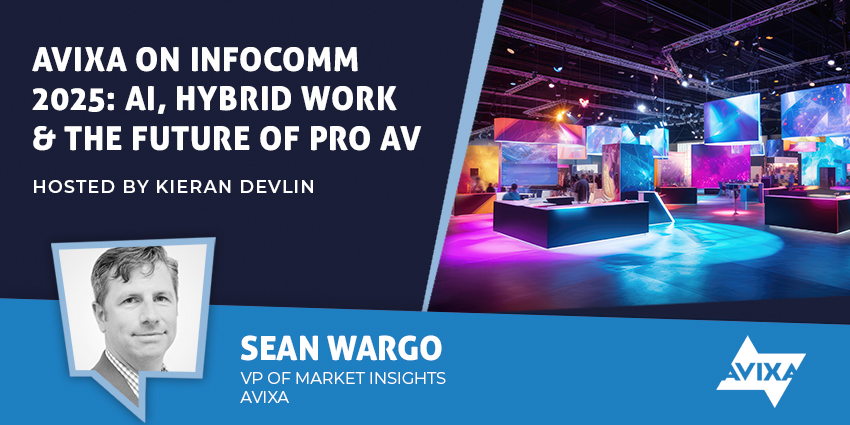Microsoft’s recent decision to cut more than 6,000 roles, roughly three percent of its global workforce, has sent shockwaves through the tech world. These weren’t just entry-level exits but encompassed veteran engineers and middle managers, and even AI leaders were shown the door. At the same time, CEO Satya Nadella reaffirmed the company’s commitment to an “AI-first” future.
This moment lands at the crossroads of ambition and uncertainty for IT leaders. Is AI finally delivering the operational efficiencies it promised, or are we seeing a rushed recalibration that risks alienating the very talent needed to steer the transformation?
Is Efficiency the New Proof Point for AI?
“If you look at companies that sell AI for workforce efficiency, laying off their own staff can serve, rightly or wrongly, as a subtle proof point that their tools work,” said Melody Brue, Vice President and Principal Analyst at Moor Insights and Strategy. “It shows they can achieve the productivity gains they’re selling.”
However, Brue outlined that this isn’t necessarily the end of hiring.
“I think we’ll see Microsoft and others investing more in R&D and internal process optimisation. Some roles, especially those tied to traditional reporting and data-gathering functions, may be reduced or streamlined by AI. But that shift creates new needs elsewhere. This isn’t a permanent downsizing. It’s a rebalancing. Yes, they have to answer to shareholders, but this could ultimately lead to better products. From an enterprise customer’s perspective, that’s a net positive.”
Evan Kirstel, Chief Digital Evangelist and Cofounder of eViRa Health, agreed with Brue but also highlighted two key trends hidden in this story’s data that extend far beyond Microsoft’s corporate strategy: “First, we’re seeing a real decline in entry-level IT and developer roles. It’s partly due to the macroeconomic climate, but AI is playing a major role here. It’s harder than ever to break into tech at the ground level, and a lot of those roles are just disappearing.”
“Second, senior developers, ones making high six-figure salaries thanks to grants and bonuses, are also under pressure,” Kirstel continued. “It’s becoming harder to justify that level of compensation when generative AI can handle so much. So we’re seeing a squeeze at both ends of the workforce, which doesn’t bode well for tech workers in general.”
Does the ‘Agent Boss’ Represent a New Role for Mid-Level Leaders?
Brue purported that opportunities for new roles might be created by the advent of AI, particularly around the entry-to-mid level and in managing the digital workforce.
“I’m thinking of something like a hybrid IT/HR role, a ‘digital workforce manager,’ or what Microsoft referred to in their Work Trend Index as an ‘agent boss,'” Brue outlined.
“The idea is that someone needs to manage these new AI agents that are being rolled out by companies like Microsoft and ServiceNow,” she elaborated. “These systems now have KPIs and identities, and someone has to oversee them. It doesn’t just work like magic. Could this be a viable new job category? It doesn’t take a brain surgeon, but it’s specialised.”
Craig Durr, Chief Analyst and Founder of The Collab Collective, agreed that these new agent management roles will emerge soon, but suggested that they might not be truly entry-level.
“Microsoft actually acknowledged early on in their Copilot rollout that it’s often the more mature, seasoned employees who are best at using generative AI tools,” Durr noted. “Why? Because they know how to give clear, concise instructions and how to prompt effectively. That’s a skill that correlates more with management experience than with entry-level roles.”
“You’re still managing output, guiding literal-minded digital workers, and orchestrating results. That takes a level of strategic thinking more often found in mid-management.”
However, Brue offered a compelling rebuttal, highlighting the new generation entering the workforce as young people who have grown up with AI and have used it since high school or even earlier in their lives; they are the first AI natives. “For them, the learning curve is way shorter,” Brue said. “They may lack management experience, but they know how to ‘speak robot’ in ways some seasoned professionals don’t.”
Acknowledging Durr’s point that this new workforce generation’s lack of experience in managing AI agents might count against them, Brue emphasised the flipside that they fundamentally understand how different AI models work: “They’re already grasping that certain models are better suited for specific tasks, whether it’s artistic work with Firefly or data summarisation with another model. They’re learning to assign tasks the way we assign responsibilities to team members. That’s intuitive to them.”
Gen Z Speaks Robot, But is There a Job Market for That Yet?
While there’s certainly a palatable future of future workforces comprising agent bosses and other AI management roles, there are some “frontier firms”, as Microsoft calls them, that are adopting these work models now.
However, it’s key to remember that while technology and the working models they foster moves incredibly quickly, many organisations’ adoption of both is another matter entirely. That applies to organisations seriously engaging with these young AI and digital natives as offering valuable skills and experiences, but also comprehensively reskilling their established workforces in the new tech.
“Businesses move more slowly than we like to think,” said Derrick Kelly, VP of Solutions Enablement at AVI-APL. “Today’s new workforce grew up on Google platforms, Docs, Sheets, and Google Classroom. Many of them didn’t touch Microsoft Office until they entered the corporate world. But that hasn’t caused a mass shift to Google in enterprise. Microsoft is still dominant.”
Kelly asserted that even with all this digital-native knowledge, companies aren’t investing heavily in retraining.
“They’re more likely to lay off and hire new talent than upskill existing teams,” Kelly said. “So yes, we’ll see more AI-enabled employees, but they won’t necessarily be the ones making key decisions about how AI is deployed. That’s still controlled by management, and if early AI efforts fail, companies will revert to old habits: hiring people to do the work. It’s going to be a push and pull for a while.”
“There’s a generational shift coming, but it’s not here yet,” added Jon Arnold, Principal of J Arnold & Associates. “Gen Z and other digital natives will have their day, but we’re not there. Right now, there’s a major gap between what vendors are pushing and what the market is ready to adopt.”
“Take Microsoft again: they’re charging a $25/month premium for AI features, while others, like Zoom, aren’t charging at all. If AI adoption slows or flops, Microsoft’s revenue stream takes a hit. The others? Not so much. And don’t forget: Teams isn’t AI-native. Microsoft has acknowledged that. If they can’t evolve Teams quickly enough, they could lose ground to platforms like Google’s, which are AI-native.”
Arnold highlighted that buyers, especially the younger, more AI-literate ones, are starting to care more about AI capabilities than the traditional feature set.
“When those buyers move up the chain, they’re going to make decisions based on AI-first thinking,” he said. “So yes, disruption is coming. But we’re still in this murky transitional phase where there’s a real disconnect between generational readiness and the speed at which vendors are moving.”
UC Today’s latest Big UC News will be published in full soon on YouTube and the home page.












